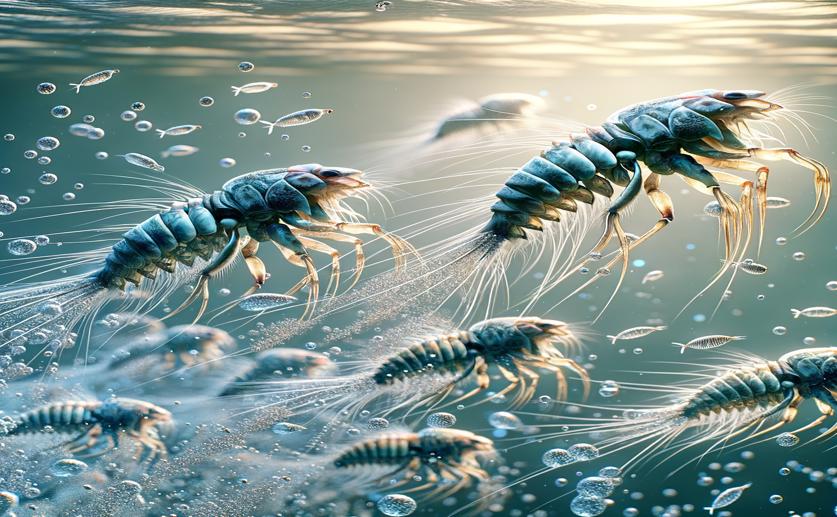
How Water Fleas Adapt to Predators Through Genetic Changes
Jenn Hoskins
27th July, 2024

Image Source: Natural Science News, 2024
Key Findings
- The study from Sangmyung University focused on how water flea Daphnia galeata adapts to predation stress using alternative splicing
- Alternative splicing allows Daphnia to produce different protein variants from the same gene, enabling flexible and rapid responses to environmental changes
- The two Daphnia genotypes (KB1 and KE2) showed different patterns of alternative splicing and gene expression, indicating that genetic background influences their defensive strategies
GeneticsAnimal ScienceEvolution
References
Main Study
1) Differences in alternative splicing events in the adaptive strategies of two Daphnia galeata genotypes induced by fish kairomones
Published 26th July, 2024
https://doi.org/10.1186/s12864-024-10643-1
Related Studies
2) Predator-induced defense makes Daphnia more vulnerable to parasites.
3) Inducible Defenses with a "Twist": Daphnia barbata Abandons Bilateral Symmetry in Response to an Ancient Predator.
4) Effects of genotypic and phenotypic variation on establishment are important for conservation, invasion, and infection biology.



 3rd July, 2024 | Jim Crocker
3rd July, 2024 | Jim Crocker